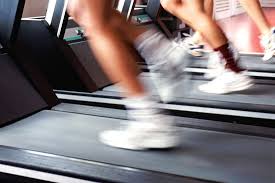Why do some people get fitter than others who do the same amount of exercise? The short answer, according to the New York Times  health writer Gretchen Reynolds, is genes. Reynolds reports on research conducted at the University of Michigan in Ann Arbor and the Norwegian University of Science and Technology in Trondheim, where scientists created two strains of rats that would or would not respond well to working out.  The two types of rats were given identical treadmill workouts, which continued for two months. Unsurprisingly, Reynolds reports, the rats bred to respond well to running had increased the distance that they could run before tiring by about 40 percent, while, surprisingly, the other rats lost about two percent of their endurance. What’s up with that? When the researchers looked at the hearts of the rats, they found that the left ventricle of the “high responding” rats had grown bigger and stronger. And the others? Their hearts looked like they did before the exercise routine began. The researchers are convinced, as Reynolds says, that if hearts don’t adapt to the demands of exercise, then workouts will sap bodies, not strengthen them. When do we get to the gene part? Right now. When the researchers looked at the gene expression in the animals’ heart cells, they found more than 360 genes that were operating differently in the two groups of animals. The genes were calling the shots, and yes, humans have the same genes in our hearts.
 health writer Gretchen Reynolds, is genes. Reynolds reports on research conducted at the University of Michigan in Ann Arbor and the Norwegian University of Science and Technology in Trondheim, where scientists created two strains of rats that would or would not respond well to working out.  The two types of rats were given identical treadmill workouts, which continued for two months. Unsurprisingly, Reynolds reports, the rats bred to respond well to running had increased the distance that they could run before tiring by about 40 percent, while, surprisingly, the other rats lost about two percent of their endurance. What’s up with that? When the researchers looked at the hearts of the rats, they found that the left ventricle of the “high responding” rats had grown bigger and stronger. And the others? Their hearts looked like they did before the exercise routine began. The researchers are convinced, as Reynolds says, that if hearts don’t adapt to the demands of exercise, then workouts will sap bodies, not strengthen them. When do we get to the gene part? Right now. When the researchers looked at the gene expression in the animals’ heart cells, they found more than 360 genes that were operating differently in the two groups of animals. The genes were calling the shots, and yes, humans have the same genes in our hearts.
